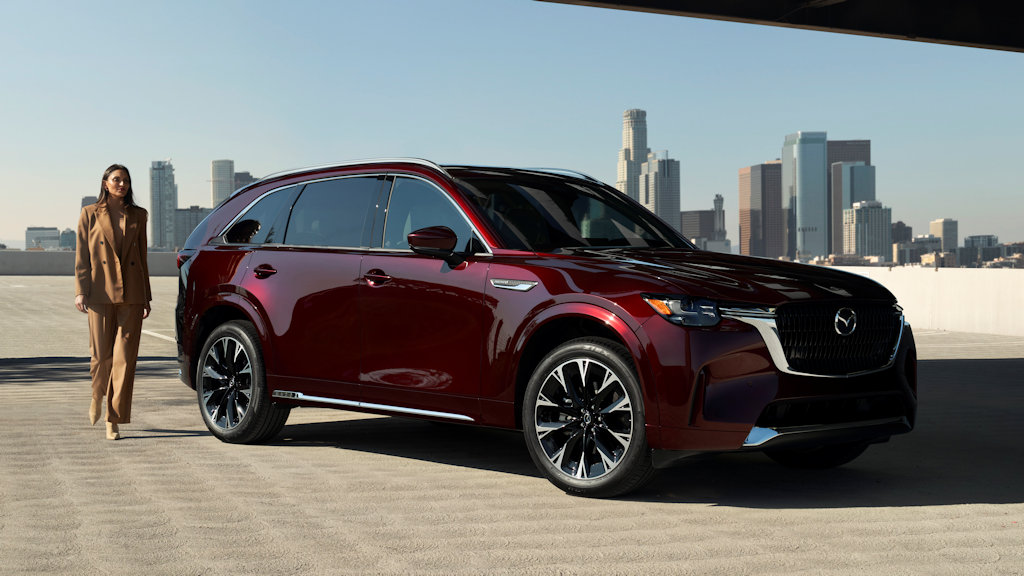Just a month after its global reveal, Mazda has revealed key performance figures for its first-ever Mazda CX-90 large SUV. And like the CX-60, it emerges as an efficiency champion.
The CX-90 follows Mazda’s rightsizing approach to its powertrain and for that comes with either a high-output gasoline or diesel engine. Either way, they both feature a 3.3-liter displacement firing on six cylinders in an inline layout, and supported by a 48-volt mild hybrid system (M Hybrid Boost).
Both force-fed six cylinders deliver effortless performance, impressive power and torque, as well as exceptional balance and smoothness. The charismatic driving dynamics afforded by the additional cylinders and larger displacement also allow for myriad other benefits, including better real-world fuel economy and cleaner exhaust emissions.
When equipped with the e-Skyactiv D turbocharged diesel engine, the CX-90 is rated with a best-in-class fuel consumption of 18.51 km/L, in conjunction with a low CO2 output of just 143 g/km—a full 10 percent on both counts compared to the next best vehicle in its segment, the CX-8 (equipped with the Skyactiv D 2.2-liter turbodiesel).
Yet, the CX-90’s 3,283-cc engine offers 34 percent more power (254 horsepower vs 190 horsepower), and crucially, for dynamic in-gear response, 550 Nm of torque (+100 Nm or 22 percent more than the CX-8). This drops the diesel’s 0 to 100 km/h sprint to 8.4 seconds, 1.2 seconds faster than the CX-8.
For those who want a gasoline engine, the 3.3-liter e-Skyactiv G engine, meanwhile, asserts its claim as the most powerful Mazda production engine ever with its 345 horsepower, 500 Nm of torque outputs.
When compared to the 2.5-liter turbo 4-cylinder in the CX-9 AWD, it has close to 50 percent more power and 19 percent more torque. This allows the CX-90 to reach 100 km/h in just 6.9 seconds—1.7 seconds faster than the CX-9. Plus, despite the extra power on tap, the CX-90 returns a combined figure of 12.19 km/L and emits 189 g/km—an improvement of 10 percent over the CX-9.
According to Mazda, the significant efficiency gains are made possible by several technological advancements introduced for the first time in the CX-60 and CX-90 model ranges.
The 48V M Hybrid Boost MHEV system ensures that in inefficient low load situations (such as idling and in low speed ranges) the engine is supplemented by the electric motor, improving overall emissions and reducing the frequency of fuel fill-ups, while the e-Skyactiv G also takes advantage of a higher compression ratio for better fuel efficiency.
In the 3.3-liter inline-six e-Skyactiv D, surplus air in the engine is used to improve combustion, resulting in a more agile acceleration response, lower nitrous oxide (NOx) emissions at high rpm and better thermal efficiency due to a greater lean burn speed range.
Additionally, the inline-six e-Skyactiv D engine uses a simple structure to keep engine weight similar to a conventional four-cylinder engine. As a result, drivers notice no discernible difference in handling despite the higher displacement.





Wow! Impressive indeed!
ReplyDelete